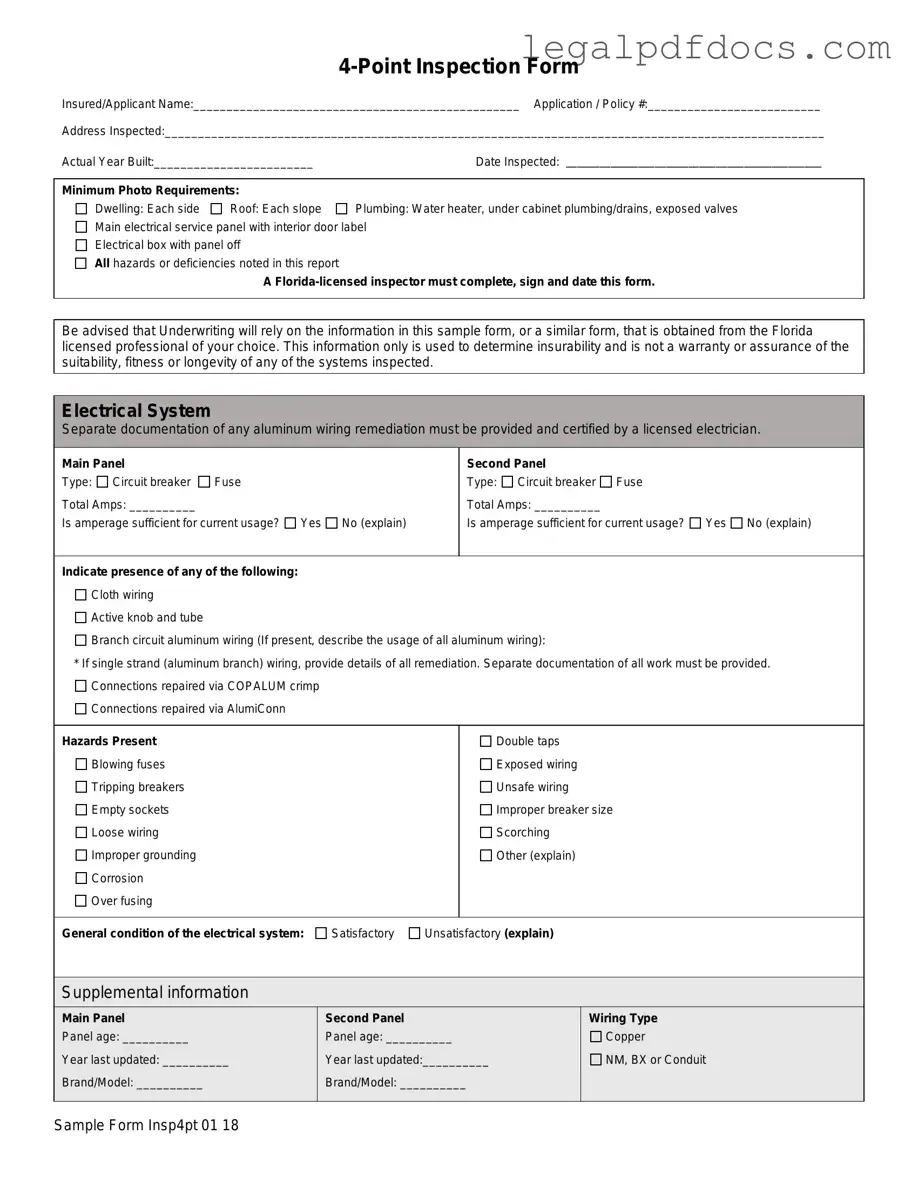The 4-Point Inspection form plays a crucial role in assessing the condition of key systems within a home, particularly for insurance purposes. This form focuses on four primary areas: the roof, electrical system, HVAC (heating, ventilation, and air conditioning), and plumbing. Each section requires detailed observations and documentation to ensure that the systems are functioning properly and free from hazards. For instance, the roof section evaluates the material, age, and overall condition, while the electrical system section addresses potential issues such as aluminum wiring and the presence of hazards like exposed wiring or improper grounding. The HVAC section assesses the operational status of heating and cooling systems, and the plumbing section checks for leaks and the condition of fixtures. To complete the form, a Florida-licensed inspector must conduct the evaluation, providing their signature and date to confirm the accuracy of the findings. Photographic evidence is also required, capturing various aspects of the property to support the written observations. Ultimately, this form serves as a foundational document for insurance underwriting, guiding decisions about a property’s insurability based on the condition of its essential systems.
